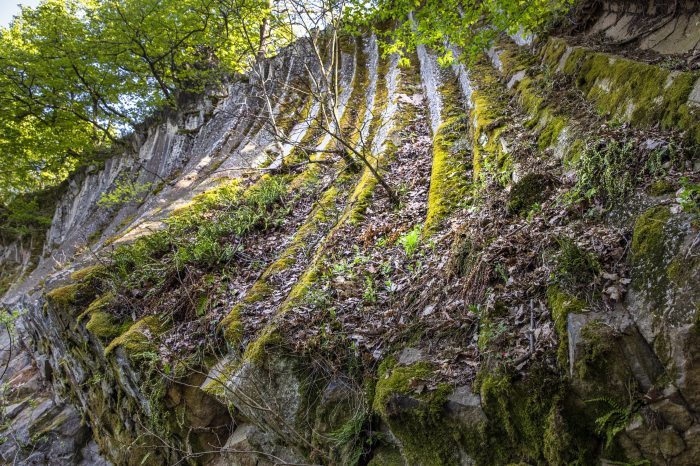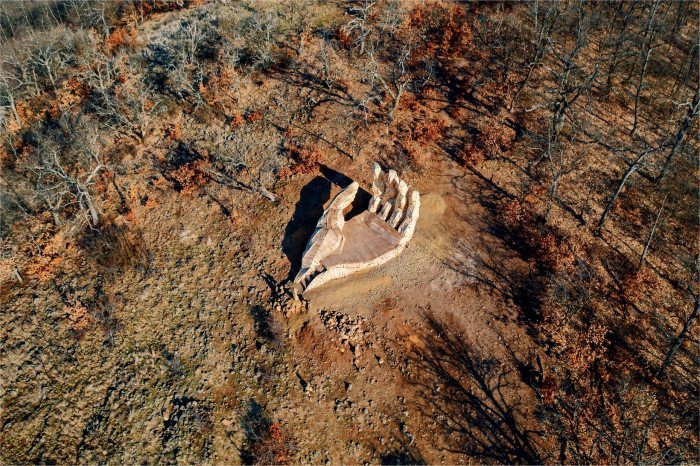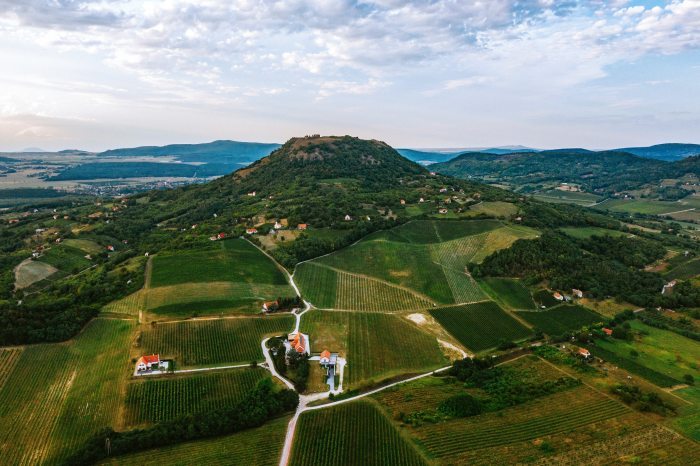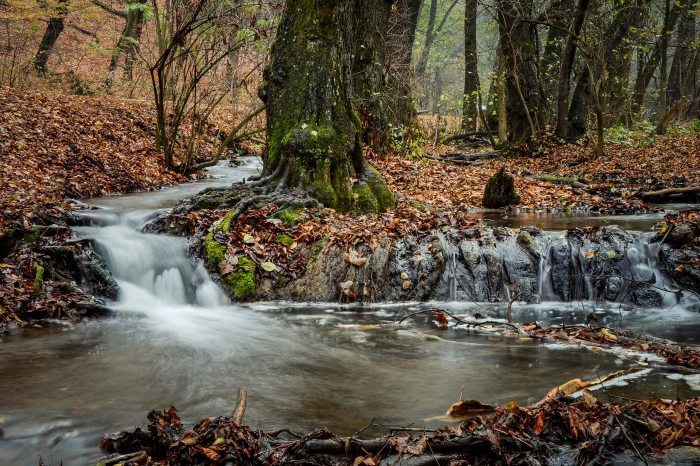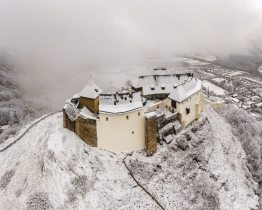15 unique places in Hungary like nowhere else in the world
Many of us tend to think we have to travel far to find something truly unique. The following compilation is proof of just how wrong this is, as we take you to places that, with their uniqueness and unrivaled beauty, are enough to astound even the great travelers.
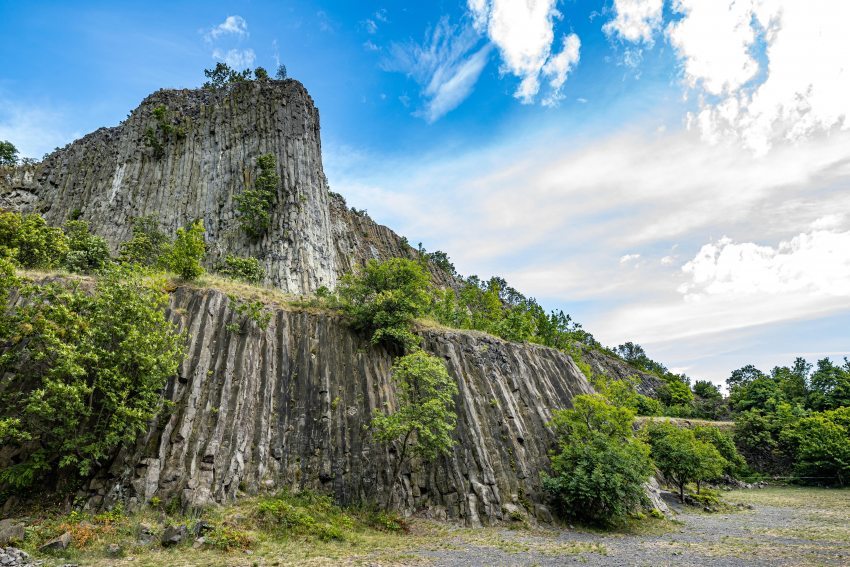
Aggtelek stalactite cave
You don't have to travel the world to find amazing caves and stalactites, you can find them in Hungary too. The Aggtelek stalactite cave is one of the UNESCO World Heritage sites in Hungary. It has 273 caves, 23 of which are strictly protected. The National Park's cave is a world record: the 25-kilometer-long Baradla-Domica cave system, which extends into Slovakia and is mostly located in Hungary, is the longest active stream cave in the temperate zone.
Kurgans in the Great Plain
When traveling in the Great Plain, we often pass by small and large hills and mounds of earth, almost without noticing them, although all but a few of these "earth pyramids" were built by the indigenous people of the area in the period from 3800 to 750 BC. These types of earthen structures are known as 'kurgans' and there are thousands of them in our country. They were originally built for a variety of purposes, including dwelling mounds, burial mounds, and guard mounds. The most famous and best-maintained of them is not far from Gyula, at the bend of the former Sebes-Körös riverbed.
The Vésztő-Mágori hill was turned into a Historical Monument decades ago, with a promenade and a park. The Attila Hill, the famous healing hill of Tápiószentmárton, has also gained national fame.
Did you know? Tápiószentmárton is not only famous for the Attila Hill, it was here that Kincsem, the undefeated racehorse, was born in 1887. The magnificent English thoroughbred became world famous by winning all fifty-four of his races, making him the most successful racehorse ever to have lived.
Andesite ’slide’, Bér
In the outskirts of Bér, a small village in Nógrád county, there is a geological formation which is rare worldwide and is bent like a slide. While basalt is often found in columnar formations, it is rare in andesite. The unique rock was formed some 15 million years ago as a result of volcanic activity.
The palm of God – lookout tower
Between the villages of Hollókő and Felsőtold, on the National Blue Trail, a giant palm-shaped lookout tower attracts visitors. Called the "Palm of God", the observation deck was designed and created by Benjámin Csíkszentmihályi at the request of the Farkaskútvölgy Traditionalist and Horse Breeding Association. Anyone who comes up to see the magnificent panorama from the lookout should not just spend a day in the area. It's also worth visiting the World Heritage-protected Palóc village of Hollókő, the like of which is also found nowhere else.
Fertőrákos Quarry and Cave Theatre
The former limestone quarry known as the Bishop’s Quarry attracts tens of thousands of tourists to Fertőrákos every year. The limestone quarrying here ceased in 1948. After centuries of mining, a deep valley and a labyrinth of gigantic chambers beneath the surface remain. The quarry has been a special venue for cultural events for decades. In summer, the excellent acoustics have been used to stage concerts, theatre, and opera performances and festivals.
Where once there was a tropical sea: the Bakony
100 million years ago, the Bakony area had a tropical climate and was covered by sea. This is reflected in the Úrkút, or Csárda-mountain paleokarst, which is second to none internationally. Since 1951, it has been a protected geological area of national importance, as it has preserved the traces of millions of years of geological change. Since 2013, a 1-kilometer-long nature trail has been open to visitors, with 6 stations, through this breathtaking landscape. The trail at Úrkút is divided into two levels: one branch runs along the edge of the sinkhole and circles the paleokarst. Descending down the giant wooden stairs into the deep valley, we are greeted by a cooler microclimate and protected plants, including ferns, and at its deepest point, there is even a cave where you can explore the pinkish Jurassic limestone to discover the remains of marine animals, fossilized shells and snails.
The 'Murderous' Lake in the Bakony Mountains
Near the village of Bakonybél, in the valley of the Somberek Séd, is the Lake of Hubertlak, also known as Bakony's Gyilkos (“Murderous”) Lake. A long time ago, the Esterházy family’s hunting lodge used to be here, but the building burnt down in 1967. The lake, fed by the springs of the Hamuházi Séd, was artificially created in the mid-1980s by flooding an alder grove. It is so named because, like its famous Transylvanian namesake, the stumps of dead trees like outstretched arms reach upwards, creating an unearthly and eerie sight.
Beehive Rock, Szomolya
This is also a storybook geological formation, which we could imagine as the home of fairytale creatures. The Beehive stones are rock formations or cone-shaped stone towers with niches (chambers) carved into their sides by people of ancient times. There is some speculation that the Beehive Rocks were used as cave dwellings, as suggested by the pottery vessels found by researchers in some places.
Hungary's desert: the sand dunes of Fülöpháza
Sand dunes as far as you can see. It's like being in the Sahara desert. But this landscape is not in Africa, it's in our country: the sandy area in the Kiskunság National Park is a remnant of the alluvial cones of the Ancient Danube. The Danube filled the area up with alluvium, and when the water left the wind-driven sand sedimentation began.
János Molnár - Cave
The cave, located in the 2nd district of Budapest under the József Hill, is the largest underwater cave system in Hungary. It is the source cave of the Lukács Baths, but it is also the source of the Malom Lake. Since 1982 it has been a specially protected natural formation; at that time only 450 m of the 7 km of passages explored so far were known, which is still not the whole cave.
The hucul stud of Jósvafő
Genetically, the Hucul horse is the closest to the horses of the peoples (Avars, Szeklers) who lived in the Carpathian Basin before the Hungarian conquest. From the time of the conquest, this ancient horse was gradually replaced by new breeds. Over the centuries, other foreign breeds were used to create the indigenous breeds we have today. The Hucul, on the other hand, survived this period in the most isolated parts of the Carpathian Mountains, in its original form, without interbreeding with foreign horses. Selection over centuries of use in difficult terrain has transformed it into a little mountain horse, which has made it superior to other breeds in terms of its manageability, working ability, carrying capacity, and safe mountain walking. The Aggtelek National Park's Hucul stud is a national treasure, and its primary aim is to preserve the breed and its genetic values. The stud is kept semi-wild, about 1 km north of Jósvafő, in the pastures of Gergés-lápa, where it can be admired all year round.
The Káli Basin and the Hegyestű
The gateway to the beautiful Káli Basin is guarded by the towering Hegyestű (“Pointed Needle” formation) between the villages of Zánka and Monoszló. The northern half of the mountain, which has a regular cone shape from Lake Balaton, has been eroded by the former quarry, but the remaining mine wall reveals the interior of a basalt volcano that was active 5-6 million years ago. Lava solidified in the volcano's crater and separated into polygonal vertical columns as it cooled. The spectacle is unique in our country and rare in Europe.
The rhyolitic tuff of Kazár
The unique geological formation can be admired in the Mátra Mountains, near the village of Kazár, and can be seen in just over six places in the world. The surface of the rhyolite tuff is deeply grooved, lacking any vegetation, and was formed by volcanic eruptions of the Mátra about 20 million years ago. The white, easily friable soil surface was formed by the erosive action of water.
The Szalajka Valley and its Brown trouts
The high mountainous Szalajka Valley, which ends at Szilvásvárad, is one of the most beautiful and well-developed parts of the Bükk Mountains. The Szalajka stream has long been home to wild brown trout, and in order to breed them, the water of the stream has been held back in several places and artificial nurseries have been created.
The Lake of Hévíz
Famous for its beautiful water lilies and therapeutic thermal waters, the lake is a unique geological formation and Europe's largest warm-water lake, a wonder that attracts tourists from all over the world.
This article is supported by the Hungarian Tourism Agency.
